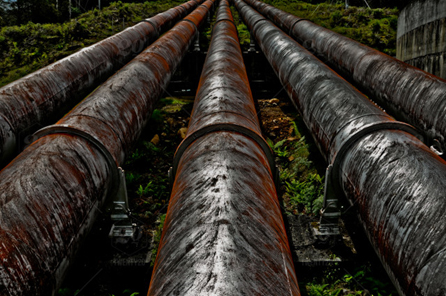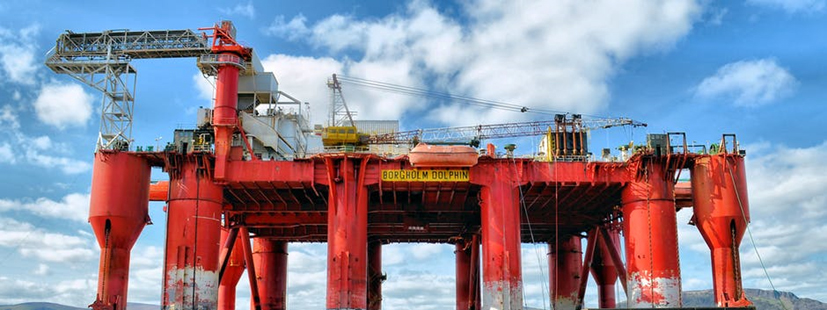Reducing the costs of corrosion: how to choose the best CRA for your project
20/06/2018 12:44 pm
In 2008, it was estimated that corrosion cost the oil and gas industry a collective $1.372 billion – a number that has significantly increased in the past 10 years.
As you’re probably aware, corrosion can have serious consequences for your business. Not only can it impact the length of operating downtime and repair costs, it also poses a severe risk to employee safety and the environment more broadly.
When dealing with toxic and corrosive chemicals like mercury, acids, carbon dioxide and hydrogen sulphide, your project is at risk of potential spills, leaks and explosions which could pose a huge cost to you and your organisation.
These risks can be significantly reduced by selecting the correct corrosion-resistant alloys (CRA) for your small bore instrumentation, valves, manifolds, fittings, and tubing.
However, not all CRA’s are equal. And there are some critical factors you need to consider before making the decision on which CRA is the right choice for your operation or project.
 Corrosion is an enormous financial drain on the oil and gas industry.
Corrosion is an enormous financial drain on the oil and gas industry.
Selecting the right CRA
Planning the materials to use in any project will often incur challenges – and when the existence of corrosion is involved, there is no exception.
Knowing which CRA to choose when dealing with internal and external corrosion is critical to the overall safety and success of your project. That’s why we’ve analysed the three key CRA’s and outlined the most important elements to consider during the selection process:
316 stainless steel: a popular material in oil and gas – but not without limitations
316 stainless steel is the second most common steel globally, and it’s used in a large majority of oil and gas operations. 316 stainless steel’s chemical composition does make it an effective CRA, but it also has several limitations, including:
- It must be fully annealed, including maximum HRC 22 compliance with NACE MR0175/ISO15156
- Inadequate when in the presence of high-chloride environments
- Low levels of resistance to corrosive cracking or pitting
So whilst 316 stainless steel is an inexpensive and practical CRA, it’s not always a sufficient material for every project.
Exotic alloys: highly corrosion resistant, but at a high cost
Companies have been trialling different materials since well before the last decade. This has been primarily driven by failures experienced on existing equipment, whereby the basic stainless steel range could not perform appropriately.
The result of this? Exotic alloys such as Super Duplex and nickel alloys. These types of alloy boasts an immense level of corrosion resistance, but due to their very large upfront costs they are often uneconomical for projects.
In our experience, exotic alloys can cost up to 8-times the price of 316 stainless steel. Hence, their widespread application in oil and gas projects may not be feasible.
6MO: a reliable, cost-effective approach
6MO has been used extensively by the U.S. manufacturer Parker Hannifin and it’s been proven to provide significant benefits over 316 stainless steel.
In comparison to 316 stainless steel, 6MO has the ability to:
- Be 3 times more resistant to corrosion cracking
- Reduce project downtime and leakage by 60%
- Meet all of the NACE standards that 316 stainless steel fails to comply with.
6MO is also a much more cost-effective alternative to exotic alloys – providing comparable levels of corrosion-resistance, but at a fraction of the cost.
Another advantage of 6MO is that it’s been developed over 22 years in the operation of Norwegian North Sea oil platforms.
 6MO was developed in the harsh conditions of the North Sea.
6MO was developed in the harsh conditions of the North Sea.
This means it’s the only product that currently conforms to the strict Norwegian NORSOK M650 standard for small bore instrumentation, valves, manifolds and fittings – making it an industry leader in the oil and gas space.
Start planning for the future of your operation
Selecting the right CRA is a huge responsibility to take on. But that’s why the team and I at VFV are readily available to help your business through the selection process.
Our years of experience with corrosion in the oil and gas industry means we know exactly what you need to ensure your CRA’s comply with NACE and NORSOK standards.
Not only that, we understand how important compliance is for protecting the safety of your operation, employees, and the environment.
To start the conversation about selecting the right CRA for your oil and gas operation, call Paul La Roche on +61 3 9873 1400 or email [email protected].
Sources:
NACE International, 2018. Oil & Gas Production. Retrieved from https://www.nace.org/Corrosion-Central/Industries/Oil---Gas-Production/.
Paul La Roche
You must be logged in to post a comment.
click here to log in
